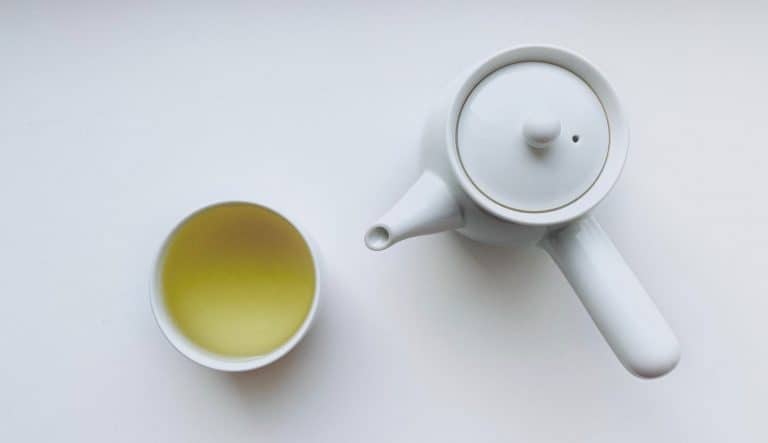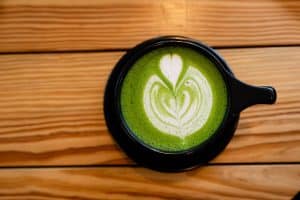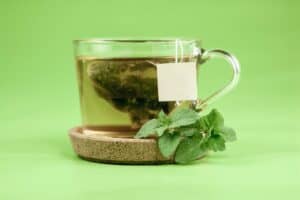Green tea has become increasingly popular in recent years due to its numerous health benefits and unique taste. Many people are curious about what green tea tastes like and how it differs from other teas. In this blog post, we will explore the flavor profile of green tea, discuss the various types of green teas available, and delve into the factors that contribute to its taste. Get ready to embark on a journey to discover the true taste of green tea.
What Does Green Tea Taste Like?
When it comes to the taste of green tea, it can be described as a combination of grass-like or vegetal flavors, nutty or roasted undertones, and occasionally sweet or floral notes. These flavors create a pleasant and refreshing taste that is highly unique to green tea. The flavor profile of green tea is distinct from other teas such as black tea or oolong tea, which have their own characteristic tastes.
How is green tea made?
Green tea is made by steaming fresh leaves and allowing them to dry out again. This means it’s much less processed than black teas, which can have stronger flavors due in part to being rancid – meaning the green variety will never taste exactly like its blueprint counterpart since there are no added chemicals or preservatives involved during the production process!
Processing and oxidation
As we mentioned earlier, green tea is less processed than black tea. This means that the leaves are not exposed to as much oxygen, which leads to a lower level of oxidation. As a result, green teas tend to have more caffeine and catechin (a type of antioxidant) than black teas.
The Type of Green Tea Matters
Green tea comes in a variety of types, and each type has its own distinct flavor. Some popular types of green teas include jasmine green tea, stem teas, fermented tea, flavored green teas, and even tea bags. For example, jasmine green tea has a delicate floral taste and aroma due to the jasmine blossoms used in the production process. Stem teas, on the other hand, offer a milder taste with woody undertones.
Exploring the Flavor Spectrum within Green Tea
Within the realm of green tea, there is a vast spectrum of tastes to explore. From grassy and vegetal flavors, reminiscent of freshly cut grass, to nutty flavors that resemble roasted nuts, the taste spectrum of green tea is expansive. Some green teas even offer subtle citrusy flavor profiles, adding a bright and refreshing element to the taste. It is this diversity in taste that makes green tea an exciting and intriguing drink to explore.
Green Tea’s Impact on the Palate
Green tea not only provides a unique taste experience but also stimulates the palate in a different way. Its light and delicate flavors can awaken the taste buds without overwhelming them. This makes green tea a perfect choice for those seeking a lighter, more nuanced tea taste. The low caffeine content in green tea also allows for a more calming and soothing tea-drinking experience.
Describing the Taste of Green Tea
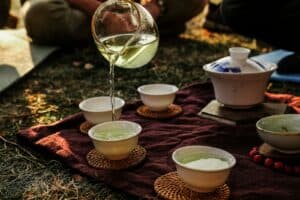
The flavor profile of green tea can be best described as a harmonious blend of natural elements. The grassy and vegetal notes provide a clean and refreshing taste, while the nutty or roasted undertones add a depth of flavor. Some green teas may offer a hint of sweetness or floral notes that enhance the overall taste experience. It is this well-rounded and balanced taste that sets green tea apart.
Variations in Green Tea Taste
The taste of green tea can vary depending on a multitude of factors. Regional differences play a significant role in flavor profiles, as teas from different regions may possess distinct taste characteristics. Furthermore, the brewing technique employed can greatly influence the taste of green tea. Experimenting with different brewing temperatures and steeping times can unlock different flavor nuances.
Influential Factors in Green Tea Taste
Several factors contribute to the taste of green tea. The processing methods used, such as steaming or pan-firing the tea leaves, can have a significant impact on the flavor profile. Additionally, factors like the quality of tea leaves, the level of oxidation, and even the altitude at which the tea is grown can influence the taste of green tea. Understanding these factors allows tea enthusiasts to appreciate the complexities of green tea taste.
Exploring Different Types of Green Tea
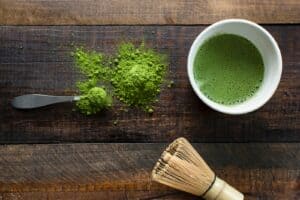
There are many types of green tea, each with its own unique flavor profile. Some of the most popular varieties include:
Sencha: This is the most popular type of green tea in Japan and has a sweet, grassy flavor.
Matcha: Matcha green tea is the type of green tea is made from ground tea leaves and has a rich, earthy flavor.
Chun Mee: This Chinese green tea has a mellow, nutty flavor with a slightly fruity finish.
Gyokuro: This Japanese green tea is made from high-quality leaves and has a delicate, sweet flavor.
Flavored green tea: There are also many flavored green teas available on the market, such as jasmine green tea or matcha latte.
Best time to drink green tea
Green tea is best enjoyed in the morning or afternoon. It is a refreshing and palate-cleansing drink that can help you stay alert and focused throughout the day. If you are looking for a tea that can help you relax and unwind, we recommend trying a different variety such as chamomile or lavender tea.
What are the health benefits of drinking green tea?
Green tea is packed with antioxidants and has been shown to offer a number of health benefits, including:
- Boosting your metabolism and helping you lose weight
- Reducing inflammation
- Helping to prevent cancer
- Supporting cardiovascular health
- Improving brain function
Japanese green teas
Japanese green teas are some of the most popular varieties in the world. They tend to have a grassy or vegetal flavor and can be brewed multiple times. Some of the most popular Japanese green teas include sencha, matcha, and gyokuro.
Chinese green teas
Chinese green teas are typically lighter in flavor than Japanese green teas. They are often described as being refreshing and palate cleansing. Some of the most popular Chinese green teas include chun mee and dragon well tea.
Brewing Tips
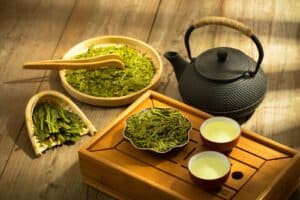
The best way to enjoy the flavor of green tea is to brew it properly. Here are a few tips on how to do that:
- Use fresh, cold water. Spring or filtered water is ideal.
- Use a moderate amount of tea leaves. About two grams per cup is recommended.
- Steep for two to three minutes. The exact time will vary depending on the variety of tea.
- Experiment with different brewing temperatures. Green tea is usually brewed around 80°C (176°F).
- Brewing green tea correctly will allow you to enjoy its delicate flavors and sweetness. Give it a try today!
Green Tea Recipes
If you’re looking for ways to enjoy green tea, here are a few recipes to try:
Green Tea Ice Cream: This refreshing treat is perfect for summer.
Matcha Latte: This popular drink is made with milk and matcha powder.
Green Tea Scones: These scones are light and fluffy, with a hint of sweetness.
Green Tea Smoothie: This healthy smoothie is a great way to start your day.
The Nuances of Green Tea Flavor
Green tea flavor is not a one-size-fits-all experience. Each type of green tea offers its own unique taste profile that can vary from subtly sweet to boldly bold. Let’s explore some of the nuances of green tea flavor that make it so intriguing.
1. Unveiling the Citrusy Flavor Profile
One of the delightful surprises you may encounter when tasting green tea is its citrusy flavor profile. Some green teas exhibit bright and zesty notes that can resemble citrus fruits like lemon or orange. This refreshing twist adds a lively and invigorating element to the overall taste. If you enjoy vibrant and tangy flavors, exploring green teas with a citrusy flavor profile can be a real treat for your taste buds.
2. The World of Flavored Green Teas
Green tea also provides a wonderful canvas for adding additional flavors and aromas. Flavored green teas come in a wide array of options, from fruity blends to floral infusions. These teas are often crafted by combining green tea leaves with natural extracts or dried fruits, resulting in an exciting fusion of flavors. Whether you’re a fan of delightful berry blends, soothing lavender infusions, or even unexpected combinations like green tea with mint or ginger, flavored green teas offer something for everyone.
3. The Convenience of Tea Bags
While purists may argue that loose-leaf green tea provides the best flavor, tea bags offer a convenient and accessible option for enjoying green tea on the go or during busy moments. Green tea bags are pre-packaged with carefully selected tea leaves, ensuring a consistent and satisfying flavor in every cup. They are quick and easy to steep, making them an ideal choice for those who crave a cup of green tea but are short on time. Whether you choose loose-leaf or tea bags, the taste of green tea remains intact, allowing you to experience its unique flavor conveniently.
Delicious Possibilities with Green Tea in Your Diet
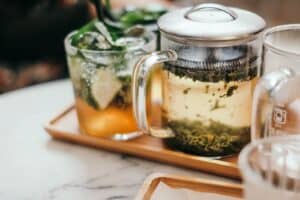
Green tea not only satisfies your taste buds but can also be a wonderful addition to a healthy diet. Here are some creative ways to incorporate green tea into your culinary adventures:
1. Infused Waters and Smoothies
Infusing water with green tea leaves or incorporating brewed green tea into smoothies is a refreshing way to enjoy its flavor. The subtle bitterness and earthy undertones of green tea can complement the natural sweetness of fruits, creating a well-balanced flavor profile. You can experiment with different fruit combinations and herbal additions like mint or basil to create refreshing and hydrating beverages.
2. Green Tea for Cooking
Green tea can add a unique twist to your culinary creations. You can enhance the flavor of rice by simmering it in brewed green tea instead of water, infusing it with an aromatic and vibrant taste. You can also incorporate finely ground matcha powder into desserts like cakes, cookies, or ice cream to give them a rich green tea flavor. The possibilities are endless when it comes to using green tea in your cooking.
3. Green Tea in Salad Dressings
Green tea can be used as a base for creating delicious and healthy salad dressings. By combining brewed green tea, extra virgin olive oil, vinegar or citrus juice, honey, and your choice of herbs and spices, you can whip up a flavorful and nutritious dressing. Drizzle it over your favorite salads or use it as a marinade for grilled vegetables or proteins to infuse them with a delightful green tea twist.
Incorporating green tea into your diet not only adds a unique flavor but also allows you to benefit from its numerous health properties. So, don’t hesitate to get creative and explore the culinary possibilities that green tea has to offer.
The Unique Taste of Green Tea
In conclusion, green tea offers a unique taste that is distinct from other teas. Its flavor profile is characterized by grassy and vegetal notes, nutty or roasted undertones, and occasionally, sweet or floral notes. The taste spectrum within green tea is vast, offering an exciting exploration for tea lovers. By understanding the factors that influence its taste, experimenting with different brewing techniques, and exploring various types of green tea, individuals can truly appreciate the complexities and unique taste that green tea has to offer.

